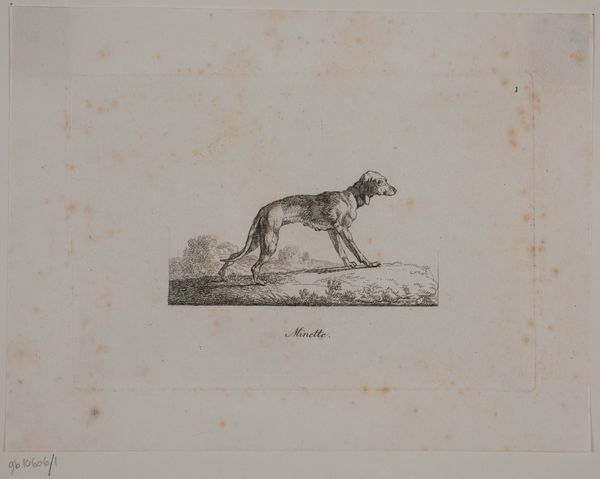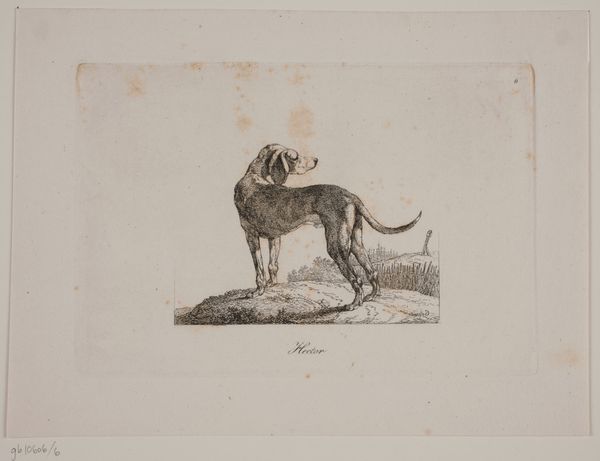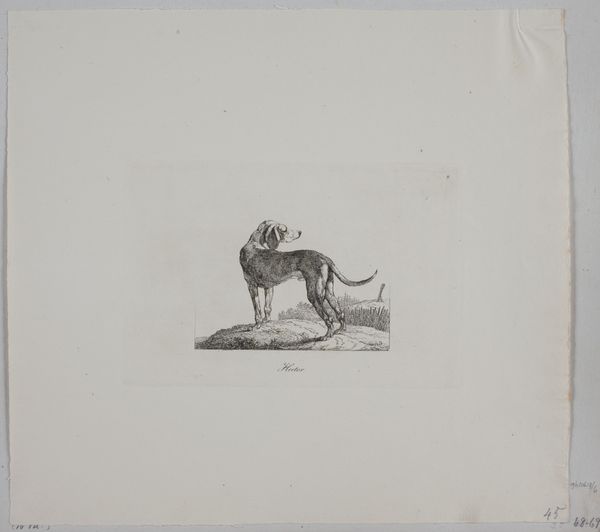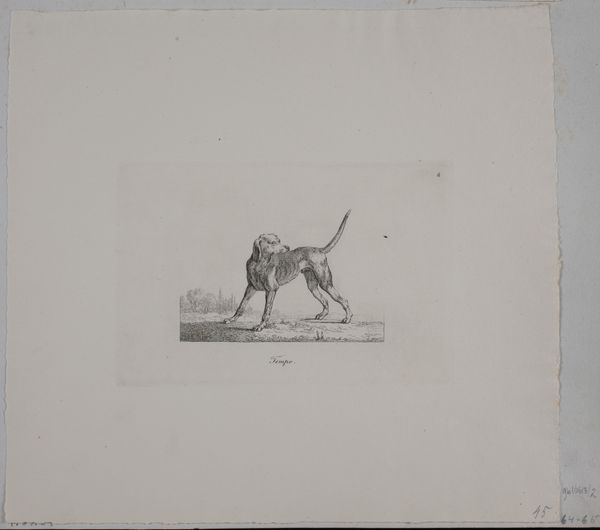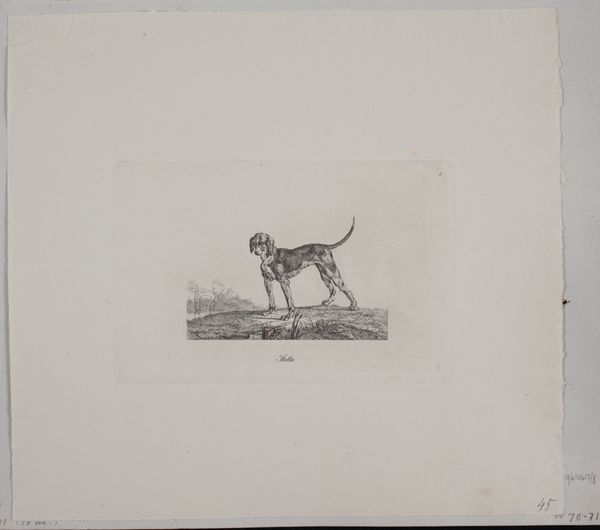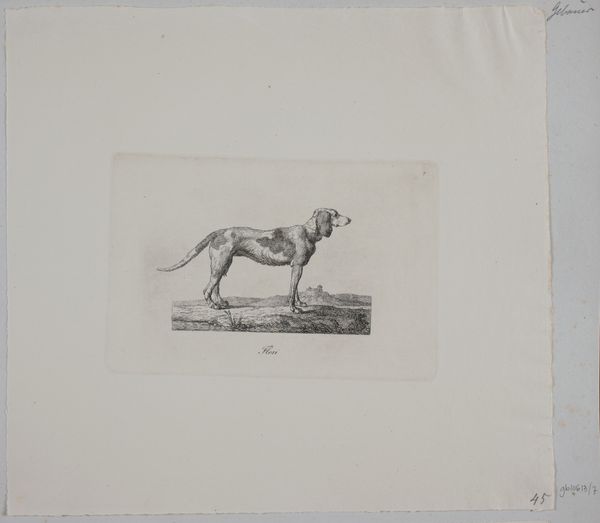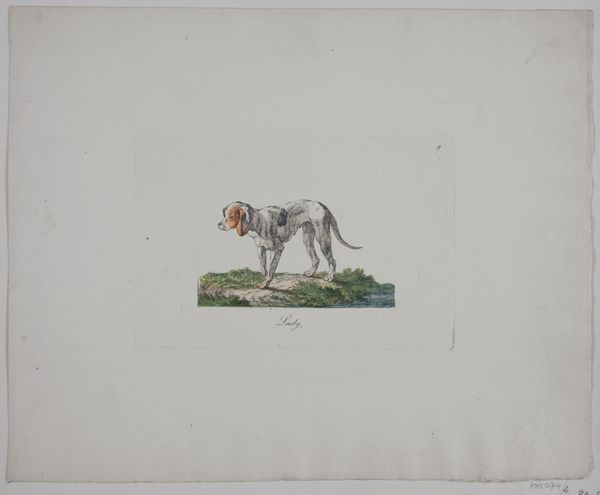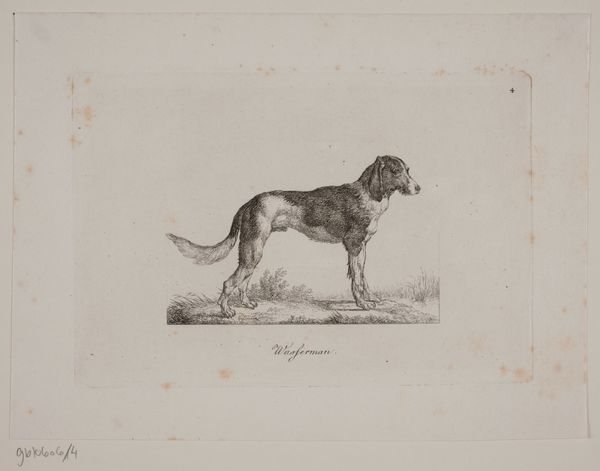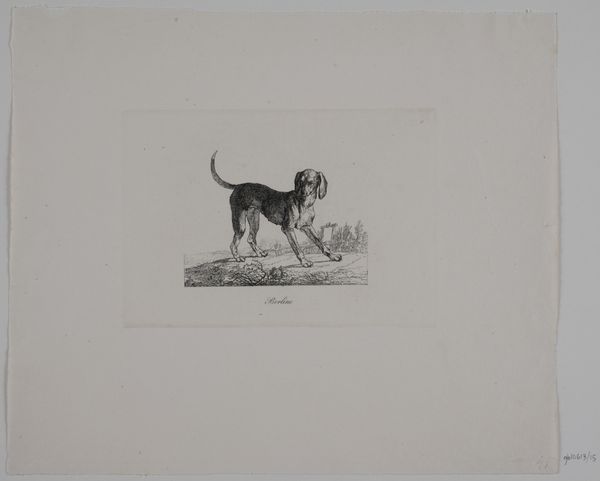
print, engraving
#
animal
# print
#
figuration
#
romanticism
#
line
#
engraving
#
realism
Dimensions: 110 mm (height) x 164 mm (width) (plademaal)
Curator: Let's spend a moment reflecting on this engraving from 1821 by Christian David Gebauer, currently residing at the SMK. It’s titled "Tempo." Editor: It strikes me as remarkably solitary. The dog seems caught in a moment of profound stillness amidst a suggestion of nature, yet strangely disconnected from it. There’s something vulnerable in the sharp, delicate lines that create it. Curator: The lines themselves are key. Gebauer masterfully employs line engraving to define the form, really imbuing a sense of realism mixed with romantic ideals; the dog is idealized, yet believable. Think about what "Tempo" signifies beyond simply "time." To me, the engraving style represents how duration imprints upon visual culture, from immediacy to permanence. Editor: And the name itself -- Tempo – lends it a quality of rhythm, an internal metronome if you will, and I wonder what cultural context framed this. Was this piece made for public viewing, for the market? What message might have been expected from art featuring animals at that time? There’s an implicit social history woven into the engraving; how animals reflect ourselves. Curator: Dogs appear often as symbols across many eras: as loyal companions or allegories to fidelity itself; often a sign of wealth too. Perhaps a symbolic representation of an individual or relationship known to the artist. Editor: Considering Romanticism was ascendant during this period, perhaps this reflects that movement's focus on nature, individualism and subjective feeling, even melancholy. Did the artwork hold contemporary implications related to societal shifts, possibly referencing new bourgeois ideals or maybe nostalgia for past traditions? It opens a whole conversation on visual expectations. Curator: That's interesting because even today, with our image-saturated world, such clear precise depictions feel simultaneously timeless and anchored in history. There’s the physical craft of creating such clarity which requires devotion that imbues meaning. The “print,” being reproducible, holds an embedded intention towards wider viewing and legacy, but that seems less pronounced when looking into the direct gaze of the dog portrayed here, fixed in this frame of an older ‘Tempo’. Editor: It truly encourages deeper inquiry into the dialogues and influences of history made palpable by form.
Comments
No comments
Be the first to comment and join the conversation on the ultimate creative platform.
